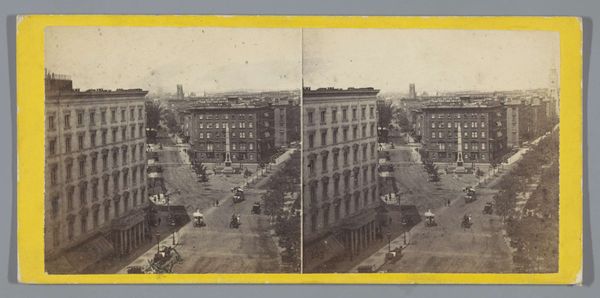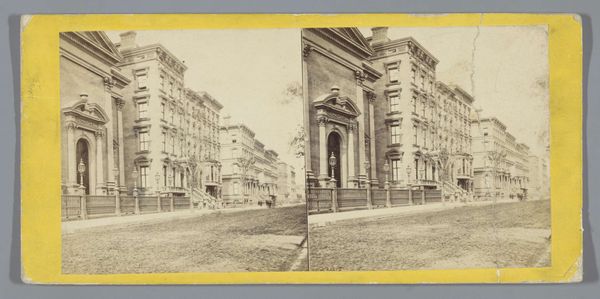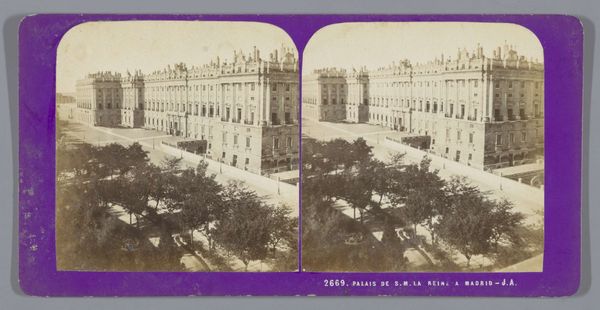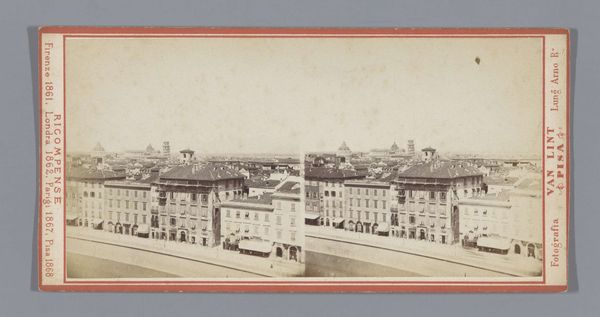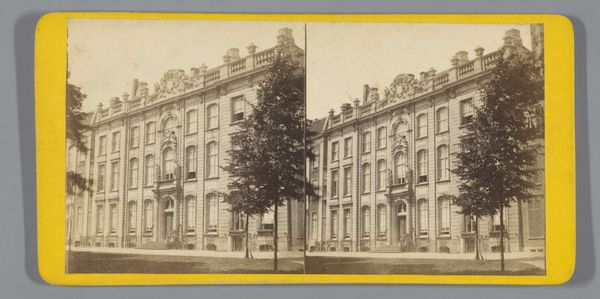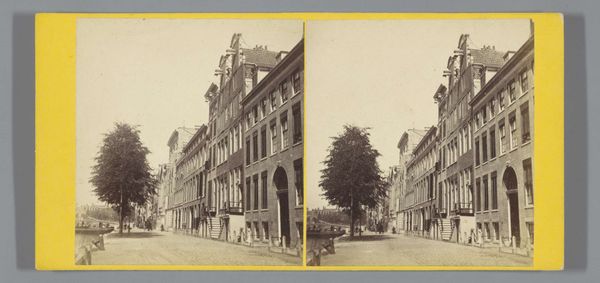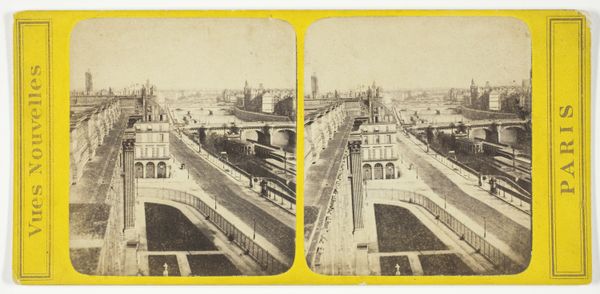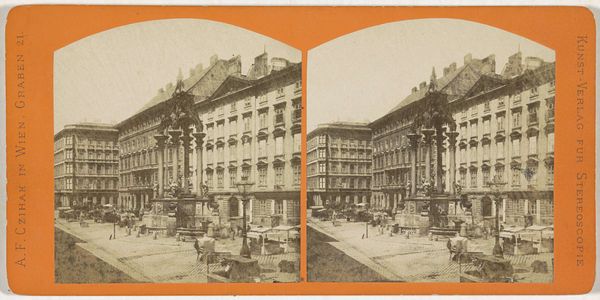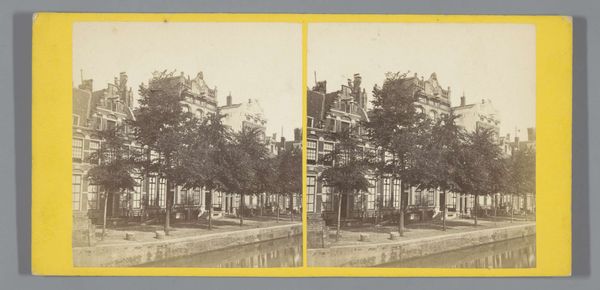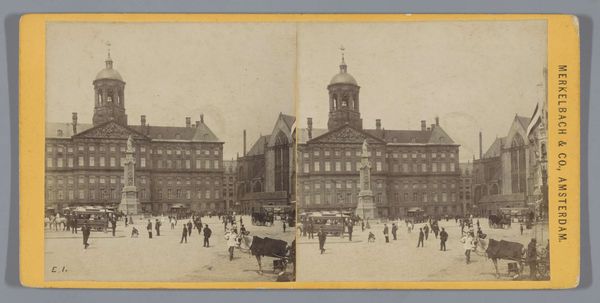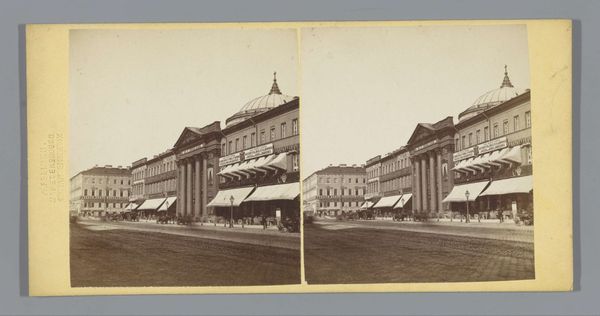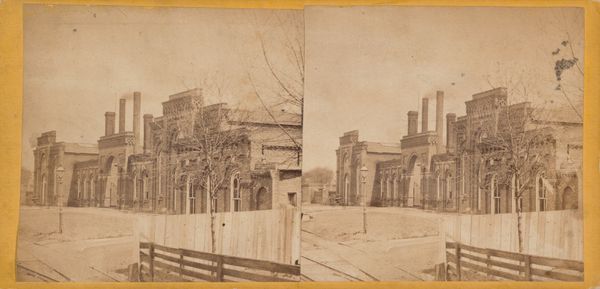
Fifth Avenue in New York, gezien vanaf het reservoir in Central Park richting het noorden 1871 - 1880
0:00
0:00
photography, albumen-print
#
photography
#
coloured pencil
#
hudson-river-school
#
cityscape
#
street
#
watercolor
#
albumen-print
#
realism
Dimensions: height 87 mm, width 176 mm
Copyright: Rijks Museum: Open Domain
Curator: At first glance, this albumen print offers a formal, almost imposing depiction of Fifth Avenue in New York, captured between 1871 and 1880 from the vantage point of the Central Park reservoir. The image appears to be presented in a stereo card format, and is credited to Anonymous. Editor: There’s something about the sepia tones and the bare trees lining the street that creates a strangely melancholic mood. The rigid geometry of the buildings contrasts with the organic shapes of the park, and it makes me think about themes of order versus nature that characterized 19th century urban development. Curator: Indeed. The choice of the albumen process is significant. It afforded a level of detail that captured the textures of the buildings and the very precise, manufactured quality of the urban environment being erected at the time. We're seeing a very specific type of chemical reaction and process allowing us to glimpse this cityscape. What raw materials made the picture happen and how accessible were they at the time? Editor: Right, and think about who could access Fifth Avenue then! Beyond the materials, this scene is rife with social coding. This viewpoint emphasizes not just the buildings, but also suggests a hierarchy in how space was organized and occupied. What socio-economic classes had access to this view? Who was on the streets, or able to live in those brownstones? It wasn't available for all, that's certain. Curator: And the way that industry and wealth were rapidly transforming Manhattan. Photography like this also played a vital role in constructing narratives of progress. We might note how its sale and consumption as a popular print form supported burgeoning industries, from paper production to photographic studios themselves. These prints became commodities, reproducing a certain ideal of the American city and selling it far and wide. Editor: Absolutely, we’re dealing with carefully manufactured images consumed within certain power structures, yes. Thinking about the historical context, the post-Civil War period witnessed rapid industrialization, vast immigration, and intensifying social disparities that shaped this vision of urban America that we see presented here. It encourages us to ask complex questions of how we remember and visualize urban centers even today. Curator: Very insightful. It's about considering the industrial infrastructure underpinning both the represented buildings and this photographic image itself, wouldn't you agree? Editor: Definitely! By considering both the image's construction and the social dynamics of the time, we can gain a better understanding of whose perspectives were privileged and how those values shape our own urban experience in the 21st century.
Comments
No comments
Be the first to comment and join the conversation on the ultimate creative platform.
